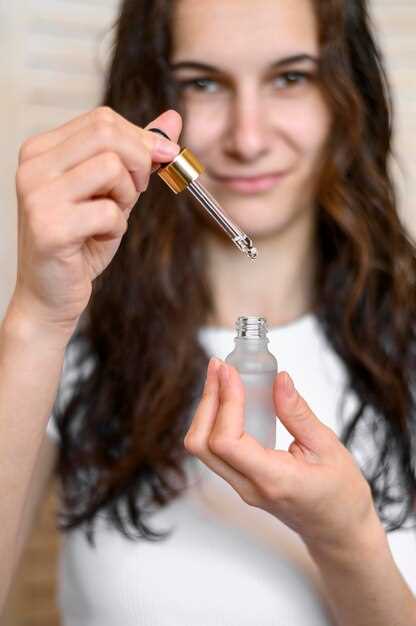
Wondering how to insert metronidazole gel? Look no further! Our step-by-step guide will show you the simple and effective way to use this medication. Metronidazole gel is a powerful treatment for bacterial infections, and knowing how to properly insert it can make a big difference in your recovery.
Follow our easy instructions to make sure you’re getting the most out of your treatment. Say goodbye to uncertainty and hello to relief with metronidazole gel!
How to Properly Apply Metronidazole Gel

Step 1: Wash your hands thoroughly with soap and water before applying the metronidazole gel.
Step 2: Gently cleanse the affected area with a mild cleanser and pat it dry with a clean towel.
Step 3: Squeeze a pea-sized amount of metronidazole gel onto your fingertip.
Step 4: Apply the gel to the affected area in a thin layer, covering the entire affected area with a gentle massaging motion.
Step 5: Wash your hands again after applying the gel to avoid spreading it to unintended areas.
Step 6: Allow the gel to dry for a few minutes before applying any other skincare products or makeup.
Step 7: Use metronidazole gel as directed by your healthcare provider for best results.
Note: Avoid getting the gel in your eyes, mouth, or nose. If accidental contact occurs, rinse thoroughly with water.
How to Properly Apply Metronidazole Gel
Metronidazole gel is a topical medication that is applied to the skin to treat various skin conditions, such as acne or rosacea. Here is a step-by-step guide on how to properly apply metronidazole gel:
- Cleanse your face with a gentle cleanser and pat dry with a towel.
- Take a pea-sized amount of metronidazole gel on your finger.
- Gently apply the gel to the affected areas of your skin, avoiding contact with eyes, mouth, and nostrils.
- Spread the gel evenly over the skin and allow it to dry completely before applying any other skincare products.
- Wash your hands thoroughly after applying the gel to prevent spreading the medication to other parts of your body.
It is recommended to apply metronidazole gel once or twice daily, as directed by your healthcare provider or pharmacist. Remember to follow the instructions provided with the medication for the best results.
Step-by-Step Guide
Applying metronidazole gel correctly is crucial for its effectiveness. Follow these steps for best results:
- Cleansing: Wash your hands and the affected area with mild soap and water. Pat dry with a clean towel.
- Application: Squeeze a pea-sized amount of metronidazole gel onto your fingertip.
- Target Area: Gently apply the gel to the affected skin, ensuring an even coverage.
- Massage: Using circular motions, massage the gel into the skin until fully absorbed.
- Avoidance: Avoid touching the treated area or applying other products immediately after.
- Frequency: Follow your healthcare provider’s instructions on how often to apply the gel.
By following these steps diligently, you can maximize the benefits of metronidazole gel and encourage optimal results.
Tips for Maximizing the Effectiveness of Metronidazole Gel
If you want to make the most out of your metronidazole gel treatment, follow these tips:
1. Cleanse Your Skin Properly: Before applying the gel, make sure your skin is clean and dry. Use a gentle cleanser to remove any dirt, oil, or makeup.
2. Apply a Thin Layer: Use just enough gel to cover the affected area with a thin layer. Avoid using too much product, as it can lead to irritation.
3. Be Consistent: Use the gel as directed by your healthcare provider. Consistency is key to seeing results, so don’t skip any applications.
4. Avoid Sun Exposure: Metronidazole gel can make your skin more sensitive to the sun. Wear sunscreen and protective clothing when going outside.
5. Moisturize Your Skin: If the gel dries out your skin, consider using a gentle moisturizer to keep it hydrated.
6. Follow Up with Your Doctor: If you have any concerns or experience any unusual side effects, consult your healthcare provider for guidance.
Expert Recommendations

Metronidazole gel is a commonly prescribed medication for the treatment of various skin conditions. To ensure its effectiveness and minimize side effects, it is essential to follow expert recommendations:
1. Consult with Your Healthcare Provider
Before using metronidazole gel, it is crucial to consult with your healthcare provider. They can provide guidance on the correct application technique, dosage, and duration of treatment.
2. Follow the Instructions Carefully
| • Apply a thin layer of metronidazole gel to the affected area |
| • Gently rub the gel into the skin until absorbed |
| • Wash your hands after application |
Following the instructions carefully can help maximize the effectiveness of the medication.
By following these expert recommendations, you can ensure that you are using metronidazole gel safely and effectively for the treatment of your skin condition.
Common Side Effects of Metronidazole Gel
While metronidazole gel is generally considered safe and effective for treating various skin conditions, it may cause some side effects in certain individuals. The common side effects of metronidazole gel include:
- Skin irritation: Some users may experience redness, itching, or burning sensation at the application site. This is typically mild and temporary.
- Dryness: The gel may have a drying effect on the skin, leading to flakiness or dry patches.
- Allergic reaction: In rare cases, individuals may develop an allergic reaction to metronidazole gel, characterized by rash, swelling, or difficulty breathing.
If you experience any severe or persistent side effects while using metronidazole gel, discontinue use and consult a healthcare provider immediately.
Precautions and Warnings
Before using metronidazole gel, it is important to take note of the following precautions and warnings to ensure safe and effective use:
1. Consult with your healthcare provider or pharmacist before using metronidazole gel, especially if you have any known allergies or medical conditions.
2. Do not use metronidazole gel in the eyes, mouth, or vagina. It is for external use only.
3. Avoid applying the gel to broken, irritated, or sunburned skin as this may cause further irritation.
4. Keep the gel away from the eyes and mucous membranes to prevent irritation or adverse reactions.
5. If any skin irritation, rash, or allergic reaction occurs after using metronidazole gel, discontinue use and seek medical attention immediately.
6. Store metronidazole gel at room temperature, away from heat and direct sunlight, to maintain its effectiveness.
7. Keep metronidazole gel out of reach of children and pets, as it is for external use only and should not be ingested.
8. Follow the instructions provided by your healthcare provider or pharmacist for the correct application and dosage of metronidazole gel.
By following these precautions and warnings, you can use metronidazole gel safely and effectively for your skincare needs.
Frequently Asked Questions About Metronidazole Gel
Here are some commonly asked questions about metronidazole gel:
- What is metronidazole gel used for?
- How does metronidazole gel work?
- Is metronidazole gel suitable for all skin types?
- How often should metronidazole gel be applied?
- Are there any side effects associated with metronidazole gel?
Metronidazole gel is a topical medication used to treat certain types of bacterial skin infections, such as acne and rosacea.
Metronidazole gel works by stopping the growth of bacteria on the skin and reducing inflammation, leading to the improvement of skin conditions.
Metronidazole gel is generally safe for most skin types, but it is recommended to consult with a healthcare provider or dermatologist before using it, especially if you have sensitive skin or allergies.
The frequency of application of metronidazole gel depends on the specific condition being treated and the recommendation of the healthcare provider. Typically, it is applied once or twice a day.
Some common side effects of metronidazole gel may include dryness, redness, itching, or burning sensation at the application site. If you experience severe side effects, consult your healthcare provider.
